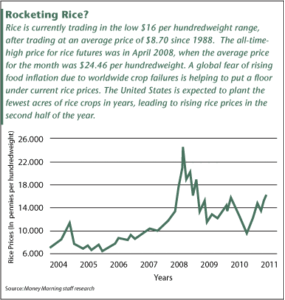 Wheat is the second-largest commodities crop in the world, behind only corn. Wheat is one of the world’s most important cereal crops grown for human consumption. It takes a lot of time studying the trends and a good working knowledge of the recent harvests to make a prediction as to how the wheat will produce. If you plan on trading in wheat futures study the markets for the last 5 years to understand how the patterns have run, before you invest.
Wheat is the second-largest commodities crop in the world, behind only corn. Wheat is one of the world’s most important cereal crops grown for human consumption. It takes a lot of time studying the trends and a good working knowledge of the recent harvests to make a prediction as to how the wheat will produce. If you plan on trading in wheat futures study the markets for the last 5 years to understand how the patterns have run, before you invest.
Wheat futures are traded in lots of 5,000 bushels, with a bushel weighing 60 pounds. Like most agricultural crops, wheat is seasonal and vulnerable to weather and other supply interruptions, which can have tremendous impacts on futures prices. Wheat is subject to similar laws, regulations and market forces as other commodities, such as gold or oil. A firm grasp of the commodities market, coupled with knowledge of the wheat industry, can yield profits.
A wheat futures contract is an agreement to purchase or sell a specific amount of wheat at a certain pre-determined price on a designated future date. These contracts are traded on futures exchanges such as the Chicago Board of Trade (CBOT), Kansas City Board of Trade, and the Minneapolis Grain Exchange. The exchange determines the contract size, quality of the product, and delivery period. Wheat futures have a 5,000-bushel contract size, one-cent move equates to $50, and they trade in March, May, July, September, and December.
Unlike the NYSE which deals mainly in stock relating to U.S. companies, the Forex market deals in a host of products from wheat to currency. The commodities side of the market is further subdivided into metals, precious metals, grains, and other agricultural products. This is a great way to diversify your investments while still staying within one basic market area.



